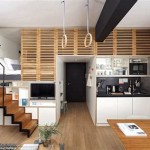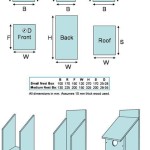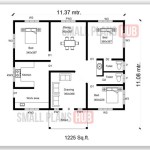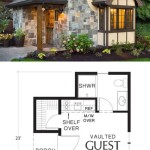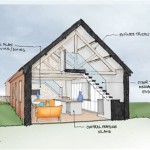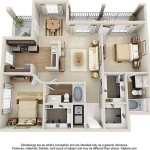How Much Do Custom Floor Plans Cost To Build?
Building a home is a significant investment, and understanding the costs involved is crucial. Custom floor plans, offering the ultimate in personalized design, come with their own unique price considerations. This article delves into the factors that influence the cost of building a home with a custom floor plan, providing insights into what you can expect and how to navigate the financial aspects of this exciting journey.
Factors Influencing Cost:
The cost of building a home with a custom floor plan is not a fixed number. It's a complex equation determined by a variety of factors, each contributing to the overall price tag. Here are some key factors to consider:
1. Building Location:
Where you choose to build plays a major role in the cost. Land prices vary widely depending on the location, with urban areas generally being more expensive than rural areas. Additionally, local building codes, availability of skilled labor, and the cost of materials can also influence the overall price. Comparing quotes from different builders in your desired location is essential.
2. Size and Complexity of the Floor Plan:
The size of your home is a primary driver of costs. Larger homes naturally require more materials, labor, and time to construct, leading to higher expenses. The complexity of the floor plan also factors in. Elaborate designs with intricate details, multiple levels, and specialized features will require more skilled craftsmanship and engineering, potentially increasing the price.
3. Materials and Finishes:
The materials you choose for your home significantly impact the cost. High-end materials like imported stone, custom woodwork, and premium appliances will naturally come with a higher price tag. Similarly, the finishes you select, such as tiles, paint, and fixtures, can influence the overall budget. Carefully consider your budget and prioritize the features that are most important to you.
4. Building Codes and Permitting:
Local building codes and permitting processes can add complexity and cost to the building process. Permits and inspections are required to ensure compliance with safety and construction standards, and fees associated with this process vary depending on the location and the scope of the project. Consulting with a local building inspector or architect early in the planning stages can help you understand these requirements and factor them into your budget.
Breaking Down the Costs:
Understanding the different components of the building costs can provide a better picture of what you can expect. Here's a breakdown of key areas:
1. Design and Engineering Fees:
A custom floor plan requires the expertise of an architect or designer. These professionals charge fees for creating the plan, obtaining permits, and overseeing the construction process. The fees can vary depending on the complexity of the project, the experience of the professional, and the location.
2. Land Acquisition:
If you don't already own land, the cost of acquiring a suitable building lot will be a significant expense. Land prices vary widely depending on location, size, and amenities. Thorough research and negotiation are crucial when acquiring land for your dream home.
3. Construction Costs:
This is the largest portion of the building budget and encompasses the costs of labor, materials, and subcontractors. Labor costs depend on the complexity of the project, the availability of skilled labor in the area, and wage rates. Material costs vary depending on the type and quality of materials used.
4. Contingencies and Unexpected Costs:
It's crucial to factor in contingencies for unexpected costs that can arise during the construction process. These can include changes in design, unforeseen site conditions, or material price fluctuations. Allocating a percentage of the total budget for contingencies can help mitigate these financial surprises.
Tips for Managing Costs:
Building a home with a custom floor plan requires careful planning and budget management. Here are some tips to help you control costs:
1. Set a Realistic Budget:
Establish a clear budget before starting the design process. This will help you make informed decisions about materials, finishes, and features. It's advisable to consult with a financial advisor and consider your long-term financial goals.
2. Shop Around for Builders:
Obtain quotes from multiple reputable builders in your area. Compare their experience, pricing, and communication styles to choose a builder who aligns with your budget and vision.
3. Prioritize Your Needs:
Identify the essential features that are non-negotiable for you and be willing to compromise on others to stay within budget. Focus on creating a functional and comfortable living space, and consider the potential cost savings of using more affordable materials or simplifying certain design elements.
4. Track Expenses:
Maintain detailed records of all expenses incurred during the construction process. This will help you stay on top of your budget and make adjustments as needed. Transparency with your builder and a clear understanding of the payment schedule are essential.
Building a home with a custom floor plan is a rewarding experience, but it requires careful planning and financial management. By understanding the factors that influence cost, breaking down the expenses, and implementing cost-saving strategies, you can navigate the financial aspects of this journey and realize your dream of building a personalized home.

How Much Does It Cost To Build A House Reinbrecht Homes

Custom Floor Plan Cost 2d And 3d Plans

Cost Of Architect To Draw House Plans Facts Know Before Hiring

How Much Does It Cost To Build A Custom Home Builder Digest

2025 Architect Costs Fees To Draw Plans Designs

Est House Plans To Build Simple With Style Blog Eplans Com

Cost To Build A House In Fixr

How Much Do House Plans Cost Drummond

Create 3d Floor Plans With Roomsketcher

Cost To Build A Tiny House Fixr
Related Posts

